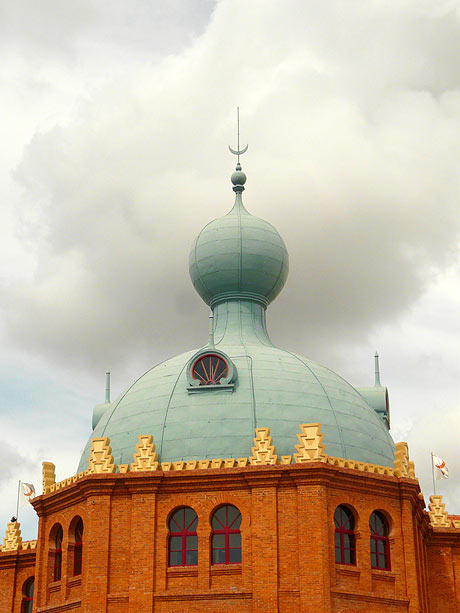Campo Pequeno Bullring

Bullfighting is a sort of symbolic icon of the Iberian Peninsula. There are, however, significant differences between the Portuguese and the Spanish bullfighting, of which the most important is the fact in Portugal bulls are not killed at the end of the show (a tradition the origins of which can be spotted in the first half of the 19th century, in a royal decree given by King Miguel of Portugal). In order to sample the best of bullfighting in Lisbon, tourists are advised to visit the Campo Pequeno Bullring.
Bullfights are, of course, held only several months a year, whereas for the rest of the year the bullring is used to sundry other purposes (concerts, exhibitions). The underground of the building has been accommodating, as from 2006 when the bullring reopened subsequently to a long period of restoration works, a shopping mall, several cinemas, plenty of restaurants and a car park with a capacity of some 1,200 lots.
The said restoration works were carried out such as not to affect the original look of the edifice. Thus, Campo Pequeno stands out, architecturally speaking, by its Moorish style splendidly materialized by the four towers which overtop the edifice, the western tower serving as entrance to the ring. The building is covered with orange brick, turning Campo Pequeno into a bright architectural presence in Lisbon. The present edifice was built between 1890 and 1892, its chief architect, Antonio Jose Dias da Silva, finding an inspiration in the bullring of Madrid. At present, the bullring has a capacity of more than 9,000 seats.
- Name:
- Campo Pequeno Bullring (Praça de Touros do Campo Pequeno)
- Address:
- Campo Pequeno, Lisbon, Portugal
- Website:
- www.campopequeno.com
 Campo Pequeno Bullring in Lisbon
Campo Pequeno Bullring in Lisbon